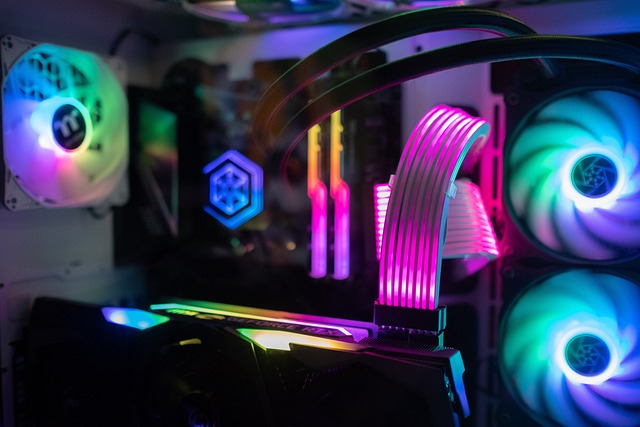
Gaming on a computer can be one of the most immersive and exciting experiences, but it also requires a system that is finely tuned to handle the demands of modern games. From graphics-heavy AAA titles to fast-paced multiplayer matches, every frame, every second, and every click counts. To get the best performance and enjoy a lag-free gaming experience, it’s essential to optimize your computer for gaming. In this detailed guide, we’ll cover everything from hardware upgrades and software tweaks to advanced settings that can help you unlock the full potential of your gaming rig.
1. Upgrade Your Hardware: Invest in Performance
a. Graphics Card (GPU)
The GPU (Graphics Processing Unit) is arguably the most crucial component for gaming. A powerful GPU can handle high-resolution textures, advanced graphical effects, and smooth gameplay at higher frame rates. If you want to optimize your gaming experience, upgrading your GPU should be a top priority.
Tips for choosing a GPU:
- Research game requirements: Different games have varying system requirements. Before purchasing a new GPU, make sure to check the recommended specifications for the games you want to play.
- Choose between NVIDIA and AMD: These are the two leading manufacturers. NVIDIA cards, like the GeForce RTX series, are known for their superior ray tracing and DLSS technology, while AMD’s Radeon RX series offers excellent performance for the price.
b. Processor (CPU)
While the GPU handles the graphical tasks, the CPU (Central Processing Unit) is responsible for executing the game’s logic, AI, and physics calculations. A weak CPU can bottleneck your GPU, limiting the performance of your entire system.
Tips for upgrading your CPU:
- Multicore performance: Games today are optimized to run on multiple cores. Aim for a CPU with at least four cores (preferably six or eight) to future-proof your system.
- Clock speed matters: While cores are essential, clock speed also plays a critical role in gaming performance. A higher clock speed (measured in GHz) generally results in faster processing, improving the overall gaming experience.
c. RAM (Memory)
Random Access Memory (RAM) helps your computer store and access data quickly. For gaming, having enough RAM ensures that your system can smoothly handle multiple tasks simultaneously, like gaming while running background processes or streaming.
Tips for optimizing RAM:
- Minimum 16GB: For most modern games, 16GB of RAM is the sweet spot. While 8GB can still work for older or less demanding games, 16GB ensures smoother performance for AAA titles.
- Higher clock speeds: When upgrading RAM, consider faster clock speeds (measured in MHz) for better performance.
d. Storage (SSD vs. HDD)
Solid State Drives (SSDs) offer much faster data access speeds than traditional Hard Disk Drives (HDDs). For gaming, this translates into faster load times, quicker boot-ups, and an overall smoother experience.
Tips for optimizing storage:
- SSD for gaming: Install your operating system and games on an SSD to benefit from faster load times.
- Consider NVMe SSDs: For even faster speeds, consider an NVMe (Non-Volatile Memory Express) SSD, which offers significantly better performance than SATA SSDs.
2. Update Drivers and Operating System
a. Keep Your GPU Drivers Updated
Drivers are essential for ensuring that your hardware works correctly with the software. Outdated GPU drivers can lead to poor performance, graphical glitches, and even crashes during gameplay.
How to update GPU drivers:
- NVIDIA: Use GeForce Experience to automatically download and install the latest drivers for your NVIDIA card.
- AMD: Use the AMD Radeon Software for easy driver updates.
b. Update Your Operating System
An updated OS ensures compatibility with the latest games and optimizes overall system performance. Regular OS updates also include security patches and bug fixes, helping your system run smoothly.
How to update your OS:
- On Windows, go to Settings > Update & Security > Windows Update, and check for updates.
- Make sure to restart your system after any major updates to ensure they take full effect.
3. Tweak Your In-Game Settings for Optimal Performance
Even with high-end hardware, improper in-game settings can reduce your gaming performance. Adjusting these settings can help you balance visual quality with smoother gameplay.
a. Resolution
Your screen resolution directly impacts how hard your GPU has to work. Playing at higher resolutions like 1440p or 4K provides sharper images but puts more strain on your GPU. For optimal performance:
- 1080p is a good standard: If you’re not using a high-end GPU, stick with 1080p resolution.
- Lower resolution for more FPS: Reducing your resolution can significantly boost your frame rates.
b. Graphics Settings
Most modern games offer various graphics settings, from shadows and textures to anti-aliasing and ambient occlusion. These settings can be adjusted to optimize performance:
- Start with the preset options: Games often have preset options like Low, Medium, High, and Ultra. If you’re experiencing lag, consider lowering your preset.
- Turn off unnecessary effects: Features like motion blur, depth of field, and volumetric lighting can add cinematic flair but don’t improve gameplay. Turning them off can boost performance.
c. V-Sync and Frame Rate Limiters
V-Sync synchronizes your monitor’s refresh rate with your GPU’s output, preventing screen tearing but potentially introducing input lag. Disabling V-Sync can reduce lag, especially if your GPU can render more frames than your monitor’s refresh rate.
- Turn off V-Sync: If you experience screen tearing and want smoother gameplay, disabling V-Sync might help.
- Use frame rate limiters: Limiting your frame rate can also prevent your GPU from overworking, which can reduce heat and power consumption.
4. Optimize System Performance
Beyond hardware upgrades and in-game settings, optimizing your system’s software can enhance your gaming experience.
a. Disable Background Processes
Background applications can consume valuable system resources, leaving less CPU, RAM, and disk space for your game. To optimize performance:
- Use Task Manager: Press Ctrl + Shift + Esc to open Task Manager and see which processes are consuming the most resources.
- Disable startup programs: Go to Task Manager > Startup, and disable any unnecessary programs from launching at startup.
b. Set Power Settings to High Performance
By default, Windows may set your system to a balanced power plan, which conserves energy but limits performance. Switching to a High-Performance power plan can boost gaming performance.
How to change power settings:
- Go to Control Panel > Hardware and Sound > Power Options, and select the High Performance option.
c. Adjust Virtual Memory (Page File)
Virtual memory acts as an extension of your RAM, allowing your computer to handle more tasks than the physical RAM can. Increasing the size of your virtual memory can improve gaming performance.
How to adjust virtual memory:
- Go to Control Panel > System and Security > System > Advanced System Settings.
- Under the Performance section, click Settings, go to the Advanced tab, and click Change under Virtual Memory.
- Set a custom size for your page file, typically 1.5x to 2x your physical RAM.
5. Cooling and Maintenance: Keep Your System Running Smoothly
a. Improve Airflow
High-performance gaming generates heat, and too much heat can lead to thermal throttling, where your CPU and GPU reduce their performance to avoid overheating. To prevent this:
- Clean your fans and filters regularly: Dust can accumulate and block airflow, leading to higher temperatures.
- Use additional cooling fans: Consider installing more case fans or using an external cooling pad for your laptop.
- Use a good thermal paste: Applying high-quality thermal paste to your CPU can reduce temperatures and improve performance.
b. Monitor Your System’s Temperature
Using software like MSI Afterburner or HWMonitor can help you track your CPU and GPU temperatures. If you notice your system getting too hot, adjust your cooling setup accordingly.
6. Overclocking: Boosting Your Performance Further
For advanced users, overclocking your CPU and GPU can unlock even more performance. Overclocking involves increasing the clock speeds of your components beyond their factory settings, but it also introduces risks like overheating and instability.
Tips for safe overclocking:
- Use software tools: Programs like MSI Afterburner (for GPUs) and Intel Extreme Tuning Utility (for CPUs) make it easier to overclock your system safely.
- Test for stability: After overclocking, use stress-testing tools like Prime95 or FurMark to ensure your system remains stable under load.
- Monitor temperatures: Always keep an eye on your system’s temperature to avoid overheating.




